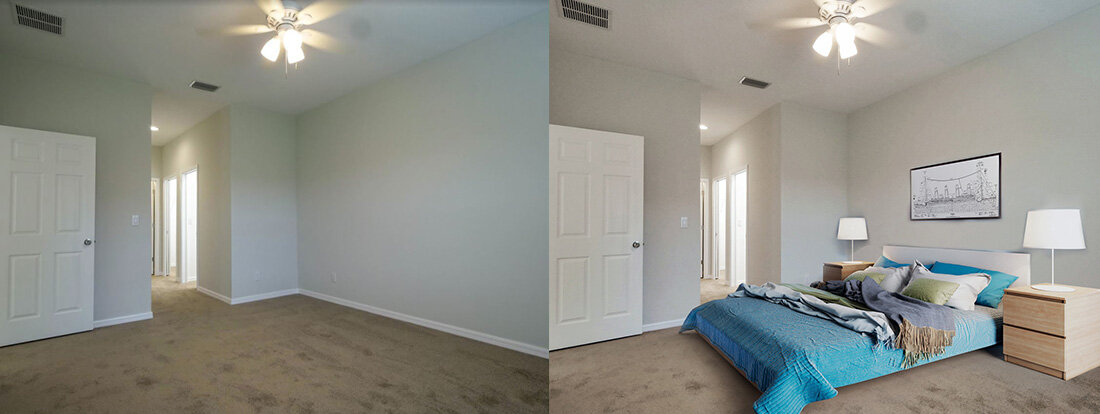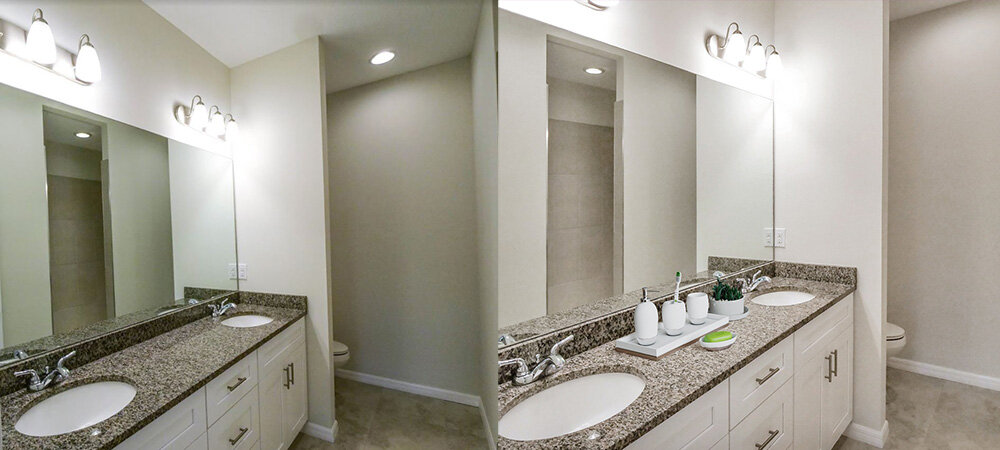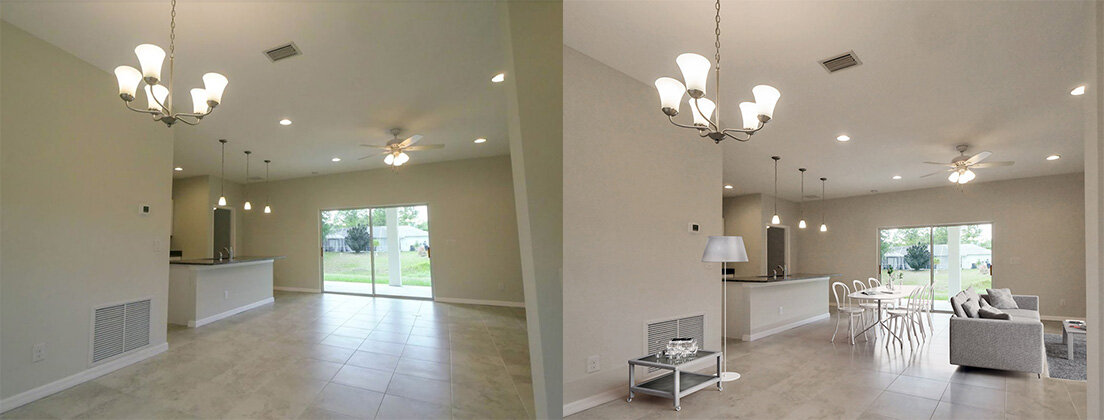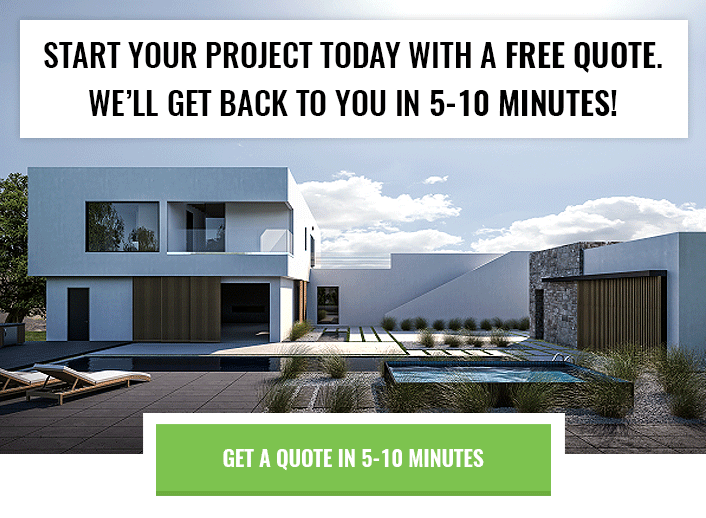Since the onset of the COVID-19 pandemic, we have seen interest in our real estate virtual reality tours and virtual staging services skyrocket.
Why? As most of us know by now, it’s getting harder and harder to go and inspect houses to buy or rent in person when we are supposed to be social distancing and self-isolating, and many services which have previously been unaffected have now been deemed non-essential.
Having a designer in your real estate property and the removalists needed to bring furniture for dressing up your place back and forth in some places is next to impossible without unnecessarily risking further spread of the virus or breaking social distancing regulations.
So when people can’t stage houses in person, they turn to digital options instead, an area where we excel!
Adding digital furniture to an empty room can totally transform how it looks, from “meh” to “I can totally see myself living here!”
What is Virtual Staging for Vacant Home Listings, Houses and Real Estate, and How Does it Work?
Real estate staging has long been an important job undertaken by agents, interior designers and decorators when trying to help their clients sell their properties. It usually includes adding furniture and decorations to vacant homes, houses and commercial buildings in order to make them more appealing and saleable than empty properties, by helping people to visualize the space more accurately, and how it could be used in a functional sense.
Virtual staging is the next leap forward in that process, where digital furniture and decorations are placed into photographs or 3D renderings of properties to serve the same purpose as physical staging.
Why Use Virtual Staging VS Real Staging - What Are It’s Pros and Cons?
The main differences between virtual and real staging are the time and cost involved, and during the current coronavirus crisis, the human interaction needed to stage a home in real life.
Virtual staging is very much quicker and cheaper than physical staging. Imagine how much time and cost is involved in getting a designer in to assess and design the space, then to hire furniture and the movers to bring it in and out of your property.
The alternative is quick and easy. Send us your photos or the property we need to spruce up, and in most cases we can get your digitally staged images back within 24 hours or less.
The choices of furniture and decorations available in digital home staging are almost endless as well!
How Much Does Virtual Staging Cost and Is It Worth It?
One of the main benefits of staging a house is that it can sell for a lot more than houses that look empty, as empty houses don’t look lived in. By adding furniture and decorations to real estate images potential buyers, investors and renters can develop an emotional connection to a property because they can see and feel the possibilities for it, and can almost imagine themselves living there. This emotional connection can mean they’re willing to spend more money to acquire the property than they would have otherwise chosen too.
Digital staging is surprisingly affordable, often just a tiny percentage of what it would cost to stage a property in real life. When you combine that with the extra money you can get for your property as a result, we think it is totally worth the small amount of time, effort and expense it will take to send us your project details and to have us digitally stage your property for you.
Virtual Staging Images Before and After
Here are some recent before and after images we have done for clients, showing you the possibilities that exist when adding digital furniture to your empty properties. We’ve put the before and after side-by-side so you can see just how much more appealing and inviting the staged versions look.



Is Virtual Staging Legal?
While you should always seek legal advice when beginning to market or advertise your properties in a new way, the main thing as we understand it that you need to avoid is misrepresenting your property or deceiving people who view the digital versions.
Some people who attend your property in person may be disappointed to find it looking different from the photos if you have not made it clear that the property you are selling or leasing has been staged digitally, and does not actually include the furniture in the images.
Virtual staging should be used to show the possibilities of a piece of real estate and what a new buyer or tenant could make it look like by adding furniture or decorations. It should not be used to cover up stains or damage or to remove things like obvious power lines or cellphone towers, as this could be considered misrepresentation and deceptive.
Here are a couple of articles you may like to read on the legal side of digital home staging and how to present your staged property to your viewers in the appropriate way:
https://www.cresinsurance.com/how-to-avoid-real-estate-lawsuits-from-virtual-staging/
What Is the Difference Between Virtual Staging and Matterport?
Virtual staging typically uses photographs of an empty property, or 3D renderings of an unbuilt property (which we can make indistinguishable from photos!), and then puts furniture, paintings, and other decorations into them.
We can then take those images, particularly when we are designing a property from scratch, and turn them into a fully fledged 3D virtual reality tour, that you can either use with a VR / AR headset, or view on your desktop or smartphone to look around the property, move between rooms etc. just like if you were in the real property. We never have to visit the property physically to do this.
In contrast, Matterport is a proprietary system that requires a person with a 360 degree camera to go to a property and take 360 photos before being able to stitch them together into a VR tour.
Below are some examples of our VR tours, feel free to explore them!
The second tour shows how fittings can be changed in an unbuilt property (in this instance the flooring), to provide prospective buyers with lots of potential alternative fitting options. They can choose from these options right inside their virtual reality experience in order to make the property their own.
Ask Us About Our 360 SPIN’s!
Click below to try one out NOW! Starting @ ONLY $199!
If you have a staging project coming up or need another type of architectural rendering service, give us a call on 1-877-350-3490 or send us an email through our quote or contact forms. We’d love to talk to you about your project!

Alex Smith
Manager & Co-Owner Render 3D Quick
Alex Smith is a manager and co-owner at Render3DQuick, with over 6 years’ experience project managing their large team of 3D rendering professionals. Alex is obsessed with architecture and is a CAD design specialist in his own right and an expert in the field of architectural visualization, 3D rendering, and virtual reality tours.
As the first point of contact when you get in touch with Render3DQuick, Alex loves sharing his knowledge and answering any questions you may have about architectural visualization or the latest technologies and techniques they utilize.
Connect with Alex on LinkedIn here.



